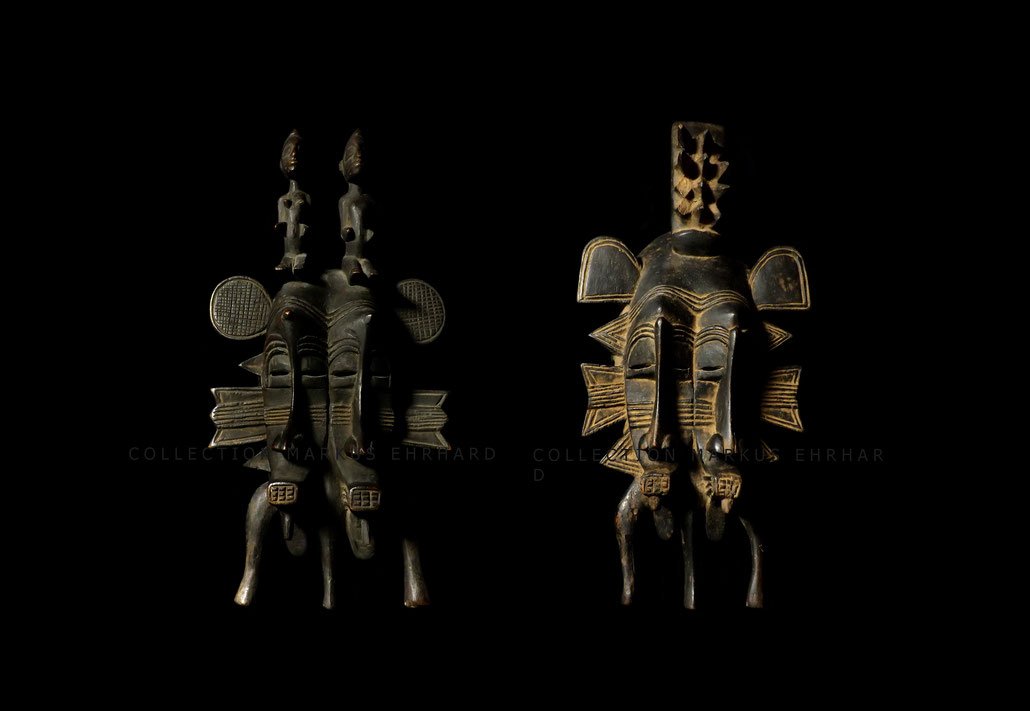
Same place, same time and two carvers. Nono Koné and Wahana Dairassouba lived worked at the same time in Tiogo. Both were Koulés who carved in the traditional Senufo style. It is not confirmed if both stood in family relation.
Having these two masks of the same genre, gives the possibility to compare. Arrangement, composition and proportion are nearly identical. Beside the different centre tops, like the Tugubele couple of Nono's mask and the Kapok fruit at Wahana's mask, both masks display the same features in decoration elements as well as Senufo characteristics like the lip peg, leg pairs below, facial scars or the forehead mark, caused by the Calao bird.
Senufo carvers don't sign their masks or statues. But they give their objects their individual handwriting in adding own features. Nono Koné's decorations on the sides of the top are round, though Wahana created a different half round with a cornered angle. Keeping in mind, that there is a competition between the carvers, these two different conceptions of shape show the artistic awareness of the carver to distinguish and to give an individual recognizable feature.
Left:
Yêchikpleyégué (doublefaced Kpelié) mask, carved by Nono Koné, Koulé from Tiogo.
34,5x 18,0 x 9,0 cm, wood. Collected by Karl-Heinz Krieg. Time of origin around 1950.
Literature:
- Wenn Brauch Gebrauch beeinflusst, Markus Ehrhard, pages 118 - 119.
- Wenn Urform Form bestimmt, Markus Ehrhard, pages 24 - 25, 40 - 41.
Right:
Yêchikpleyégué (doublefaced Kpelié) mask, carved by Wahana Dairassouba, Koulé from Tiogo.
29,0 x 14,5 x 5,0 cm, wood. Collected by Souleymane Arachi, Korhoho.
Literature:
- Wenn Urform Form bestimmt, Markus Ehrhard, pages 120 -121.
Copyright content and images by Markus Ehrhard


Kommentar schreiben